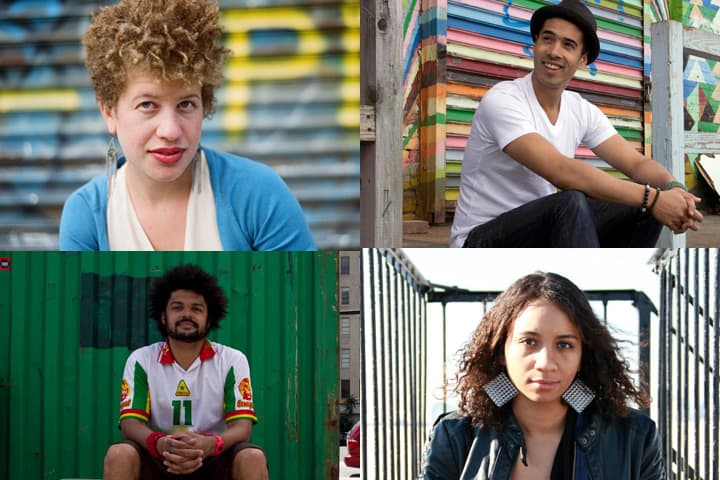Advertisement
‘Evoking The Mulatto’ In Mixed-Race America
ResumeMixed-race America in the time of Black Lives Matter and demographic change. We’ll talk race, identity and the film project “Evoking the Mulatto”.

Mixed race America is a fast-growing piece of the American pie. Ten percent of American births now, and growing. Until 1967, interracial marriage was illegal in many states. Today, relationships regularly cross all the old racial lines. What is it like to be that American? A new film project with the provocative title “Evoking the Mulatto” talks with lots of mixed race Americans about their everyday experience and their most intimate thoughts on love, beauty, justice, racial identity, and the American future. This hour, On Point, we’re listening to mixed race Americans.
-- Tom Ashbrook
Guests
Lindsay Catherine Harris, multimedia artist and creator of "Evoking the Mulatto." (@lindscathar)
Ko Smith, painter based in New York City. Featured in "Evoking the Mulatto."
Kaliya Warren, filmmaker based in New York City. Featured in "Evoking the Mulatto." (@kmakesmovies)
From Tom’s Reading List
New York Times: America’s ‘Postracial’ Fantasy -- "Being — or appearing — biracial is a real Rorschach test with regard to how our ideas about race have evolved. For every person who hardly bats an eye at the idea of a light-skinned biracial woman identifying as African-American, there’s another person waiting to inform her that she doesn’t '‘look very black."
The Root: Why I Agree With Taye Diggs: When We Call Biracial Kids ‘Black,’ We Disrespect Their ‘White’ Side -- "Taye Diggs is talking about something that has always boggled my mind: why we call biracial people (namely, Americans who have both black and white parents) black. I've always wondered why we black Americans accepted that one-drop rule created by white Americans during chattel slavery: the rule that said that people who are born from black and white parents are black, and not black and white."
National Geographic: The Changing Face of America — "The U.S. Census Bureau has collected detailed data on multiracial people only since 2000, when it first allowed respondents to check off more than one race, and 6.8 million people chose to do so. Ten years later that number jumped by 32 percent, making it one of the fastest growing categories. The multiple-race option has been lauded as progress by individuals frustrated by the limitations of the racial categories established in the late 18th century by German scientist Johann Friedrich Blumenbach, who divided humans into five 'natural varieties' of red, yellow, brown, black, and white."
Watch A Clip From "Evoking The Mulatto"
This program aired on November 23, 2015.
